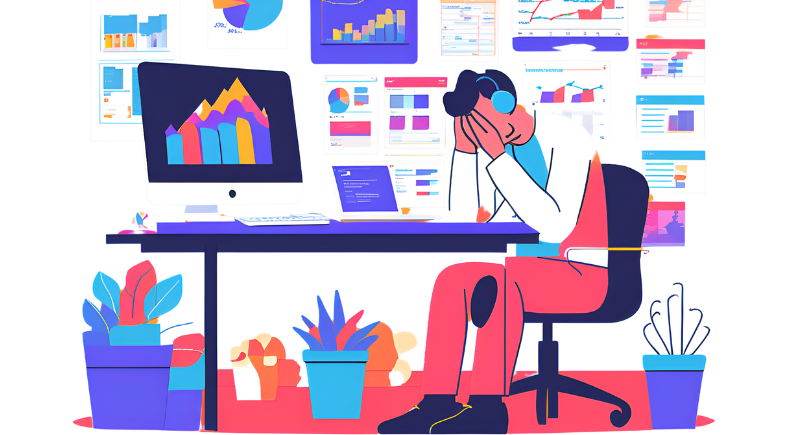The 10 Biggest CRM Mistakes That Are Hurting Your Sales (And How to Fix Them)

Your CRM system should be your ecommerce store’s secret weapon, helping you drive personalized experiences, increase repeat purchases, and grow customer lifetime value. But too often, brands are leaving money on the table because of overlooked mistakes that quietly sabotage sales.
Let’s break down the 10 most common CRM mistakes we see ecommerce brands make, and how to fix them with smart, actionable strategies. When implemented effectively, these improvements can lead to sales growth of 20–40% over time by improving engagement, reducing churn, and increasing conversion rates.
1. Treating All Customers the Same
The Mistake: Sending the same email campaigns to everyone on your list.
Why It Hurts: Not every customer has the same intent. Blasting one-size-fits-all campaigns leads to lower open rates, fewer conversions, and a higher unsubscribe rate. If your company has a broad range of offerings, then the opportunity to personalize has HUGE potential.
Fix It: Use CRM data to segment based on purchase history, behavior, and lifecycle stage. New customers should receive welcome flows; loyal customers should get VIP perks; inactive customers need re-engagement triggers.
💡 Tactic: In Klaviyo or Omnisend, create automated flows based on last purchase date and product interest to increase relevancy and revenue per send.
📈 Sales Impact: Segmented campaigns typically drive 20% higher open rates and I've seen campaign segmentation/personalization boost revenue by up to 6x compared to non-segmented campaigns.
2. Not Having a Clear Customer Lifecycle Strategy
The Mistake: Your CRM just stores data, it’s not actively helping you move customers from first-time buyer to loyal fan.
Why It Hurts: Without defined lifecycle stages (new, active, at-risk, churned), your messaging lacks intent.
Fix It: Define your lifecycle stages and map campaigns to each. Use RFM modeling (Recency, Frequency, Monetary) to identify where each customer is in their journey and what they need to convert again. I've found it helpful to use tools like Figma or Miro to help map out all of the communications along the customer journey. This has been a game changer for me and my team, allowing us to collaborate much better on new strategies and tactics.
💡 Tactic: Use AI-powered lifecycle tools like Exponea or Drip to automate tailored campaigns based on where a customer sits in your funnel.
📈 Sales Impact: Brands using lifecycle-based messaging often see a 25-30% increase in repeat purchases and stronger long-term loyalty.
3. Poor Data Hygiene
The Mistake: Your CRM is filled with duplicate contacts, inactive emails, and outdated info. It's important to consolidate your customer data into a single view of the customer in order to leverage it effectively.
Why It Hurts: Dirty data kills personalization, skews your analytics, and can lead to deliverability issues.
Fix It: Schedule regular CRM cleanups. Use tools like Insycle or Dedupely to merge contacts, remove invalid emails, and enrich profiles.
💡 Tactic: Run a quarterly data health audit. Suppress or re-engage contacts who haven’t opened an email in 90 days.
4. Ignoring First-Party Data
The Mistake: Relying heavily on paid ads and third-party data, while under-utilizing the rich behavioral data you already own.
Why It Hurts: You're missing out on more cost-effective, personalized strategies that convert better.
Fix It: Use first-party data from purchase history, site behavior, and email engagement to fuel personalized product recommendations and targeted messaging.
💡 Tactic: Use tools like Segment or Customer.io to unify data from across your site, app, and email platform.
📈 Sales Impact: Companies leveraging first-party data effectively see a 2-3x increase in ROI on email marketing.
5. Not Leveraging Automation Enough
The Mistake: Manually sending emails or only using basic automations like abandoned cart.
Why It Hurts: You miss dozens of high-converting opportunities to engage customers automatically. It's work to configure up front, but once it's live, this is now passive revenue you'll rake in ongoing.
Fix It: Build out a full suite of automations, here's a list of high-impact campaigns to get you started -
- Welcome series
- Browse abandonment (cart, search, product page view)
- Post-purchase upsell
- Stock-up on essentials
- Price drop (pro tip: follow up with customers who abandoned a product in cart to let them know the product is now at a cheaper price from their last shopping session)
- Birthday offers
- Win-back flows
💡 Tactic: Brands that use a full automation suite often see 30-50% of their email revenue come from automated flows.
📈 Sales Impact: in my experience email campaigns triggered from timely automations can drive up to 320% more revenue per email compared to manual campaigns.
6. Neglecting Personalization Beyond First Name
The Mistake: Thinking “Hi [First Name]” is enough personalization.
Why It Hurts: Customers expect Amazon-level relevance. Generic messaging won’t cut it.
Fix It: Personalize based on browsing behavior, past purchases, and even customer sentiment.
💡 Tactic: Use AI tools like Klaviyo Predictive Analytics or Dynamic Yield to recommend products based on behavior and previous buys.
📈 Sales Impact: Advanced personalization can boost click-through rates by up to 41% and conversion rates by 20% or more.
7. No Strategy for Churned or Inactive Customers
The Mistake: Letting lapsed customers fade without a fight.
Why It Hurts: It’s cheaper to win back a past customer than acquire a new one. When your once high-value customers are slipping away, it's worth reaching out to try and win them back!
Fix It: Set up automated win-back flows that offer time-sensitive discounts or reminders of past favorites.
💡 Tactic: Use subject lines like “We saved this for you” and remind them what they bought before to re-spark interest.
📈 Sales Impact: Win-back emails can recover 10-20% of dormant customers with personalized content.
8. Using Vanity Metrics Over Revenue-Driving KPIs
The Mistake: Focusing on open rates instead of metrics tied to revenue.
Why It Hurts: High opens mean nothing if no one buys.
Fix It: Shift your focus to metrics like revenue per email, customer lifetime value, repeat purchase rate, and opt-in source ROI.
💡 Tactic: Tools like GA4, Listrak and Triple Whale give you deep insight into email revenue attribution and customer behavior.
📈 Sales Impact: Focusing on the right KPIs can optimize your budget allocation and increase ROI from CRM by up to 30%.
9. Underutilizing SMS and Omnichannel Touchpoints
The Mistake: Relying solely on email and neglecting SMS, push, or on-site messaging.
Why It Hurts: Customers live across platforms... meet them where they are.
Fix It: Use your CRM to coordinate email, SMS, push, and on-site popups for a cohesive experience.
💡 Tactic: Launch a cross-channel campaign where email teases a product drop, SMS delivers the early access link, and your site has an exit-intent offer. When a customer doesn't open up an important email, follow up on SMS. Most customer engagement platforms / CRM's like Salesforce Marketing Cloud and Braze allow you to enable these types of cross-channel communication flows.
📈 Sales Impact: Brands using omnichannel CRM strategies report 90% higher customer retention and 30% more sales compared to single-channel approaches.
10. No Feedback Loop Between CRM and Marketing Team
The Mistake: Your CRM data lives in a silo, disconnected from your marketing strategy.
Why It Hurts: You miss insights that could boost campaign relevance and performance.
Fix It: Create a feedback loop where CRM data informs creative, ad targeting, and campaign timing.
💡 Tactic: Share CRM segmentation insights with your ad team to tailor Facebook and Google lookalike audiences to your best customers.
📈 Sales Impact: CRM-aligned ad strategies can lead to 20-50% higher ROAS and better customer acquisition quality.
Final Thoughts
Your CRM should be more than a list of contacts... it should be the engine that powers your most profitable marketing efforts. Avoiding these common pitfalls can help you turn your CRM into a sales-driving powerhouse.
🧠 Remember: The best-performing ecommerce brands don’t just store customer data. They activate it.
Ready to get more out of your CRM? Start by auditing one of the areas above and take action this week. Small tweaks can lead to big revenue gains.

